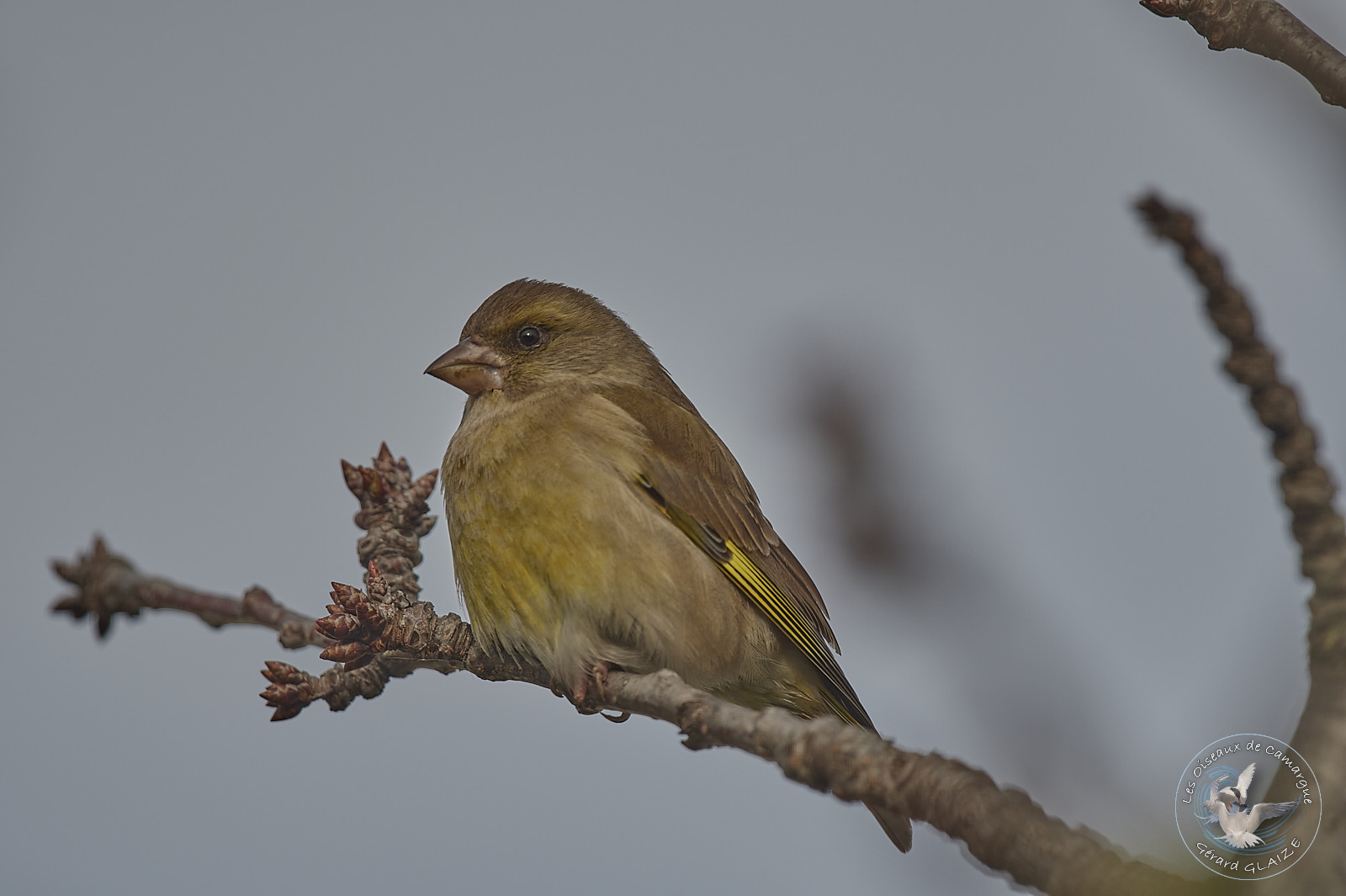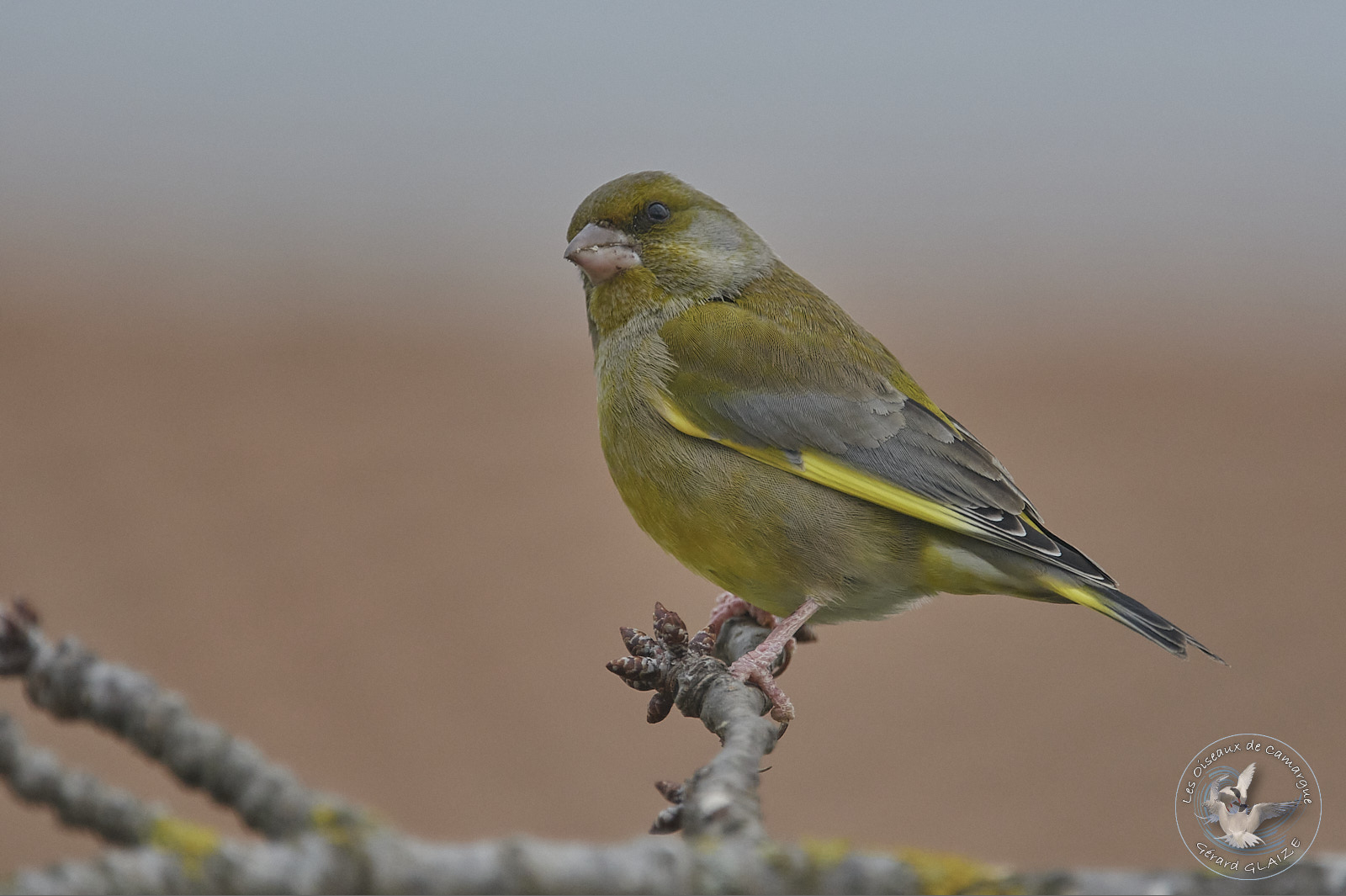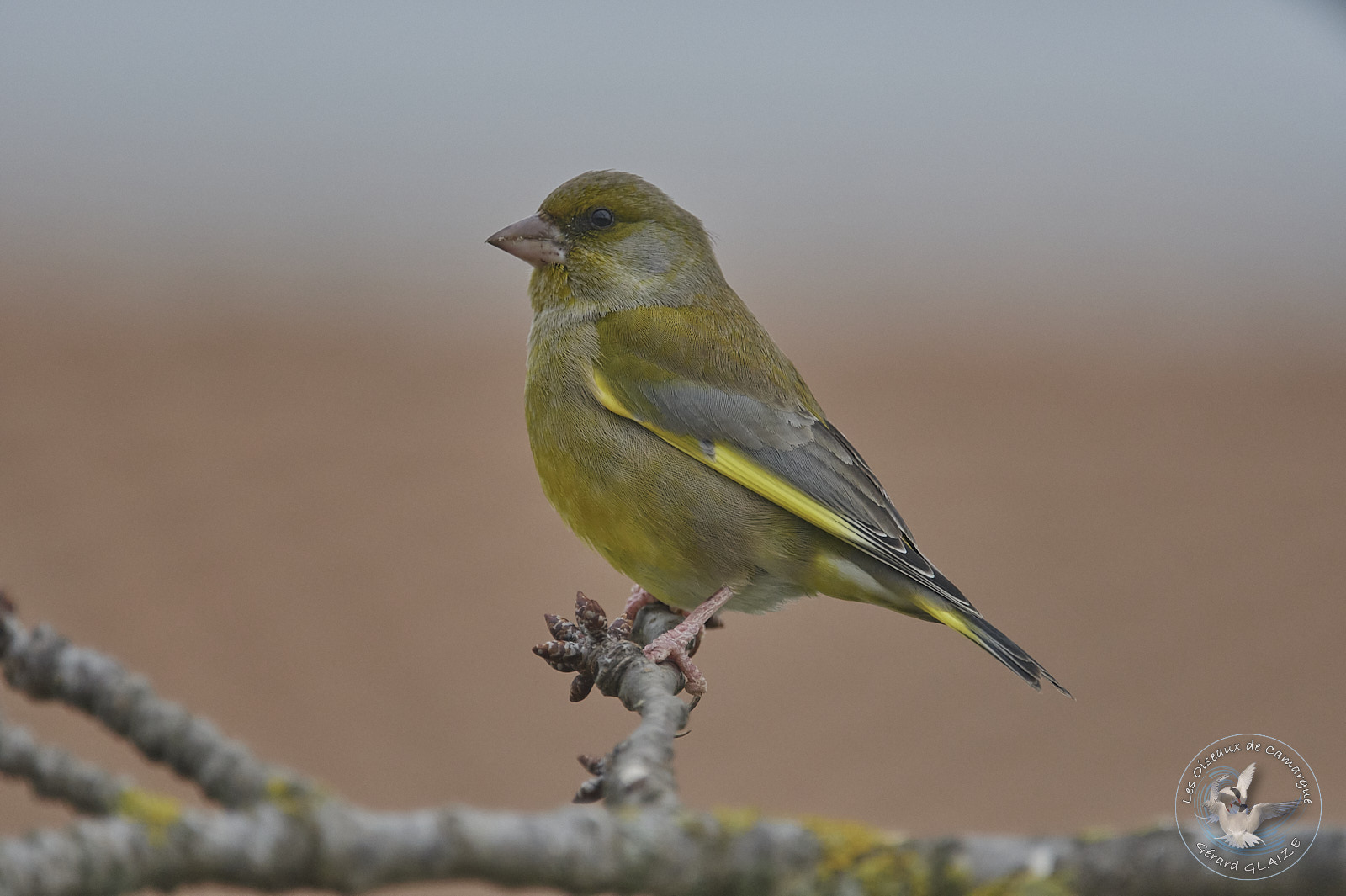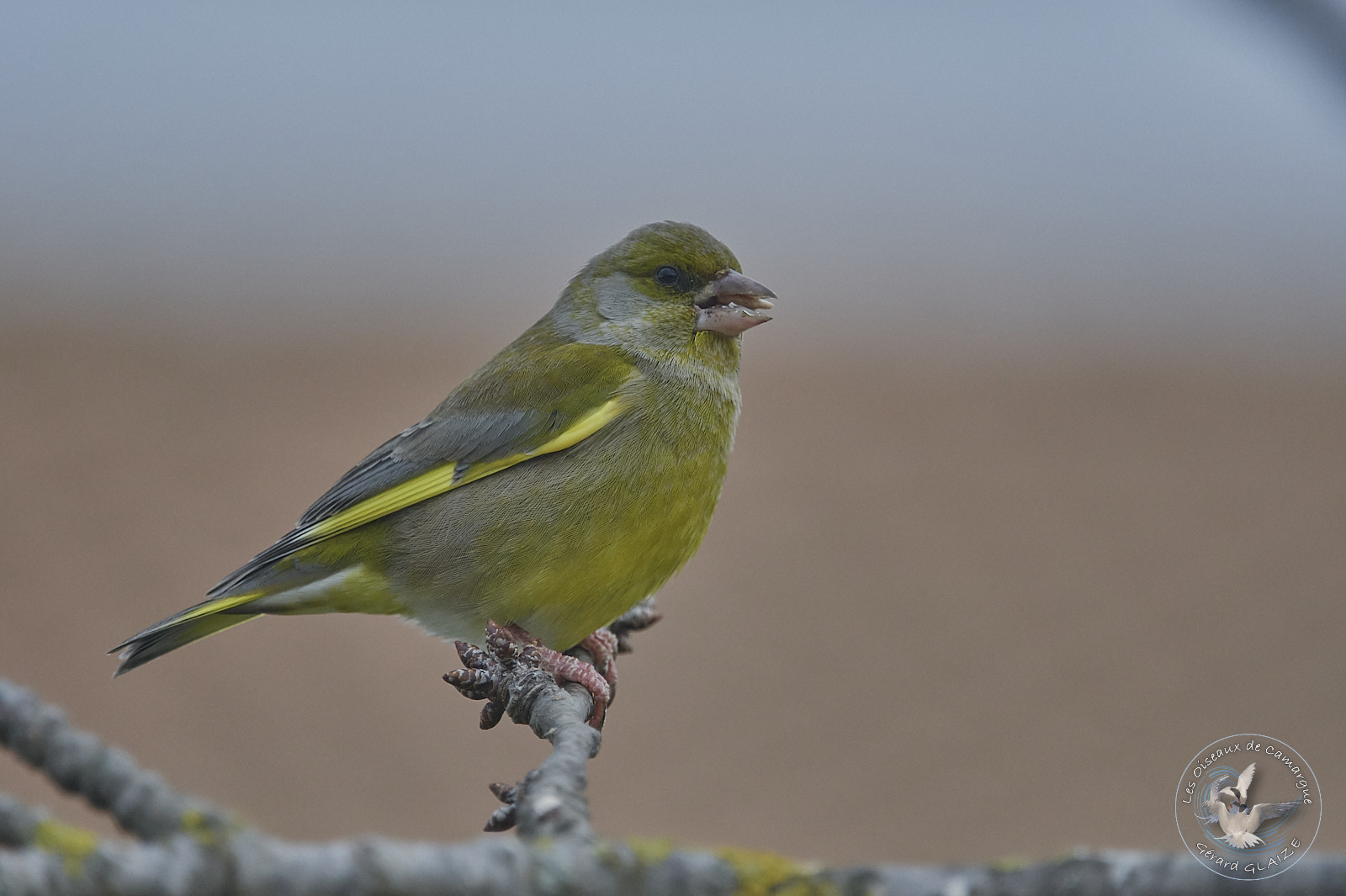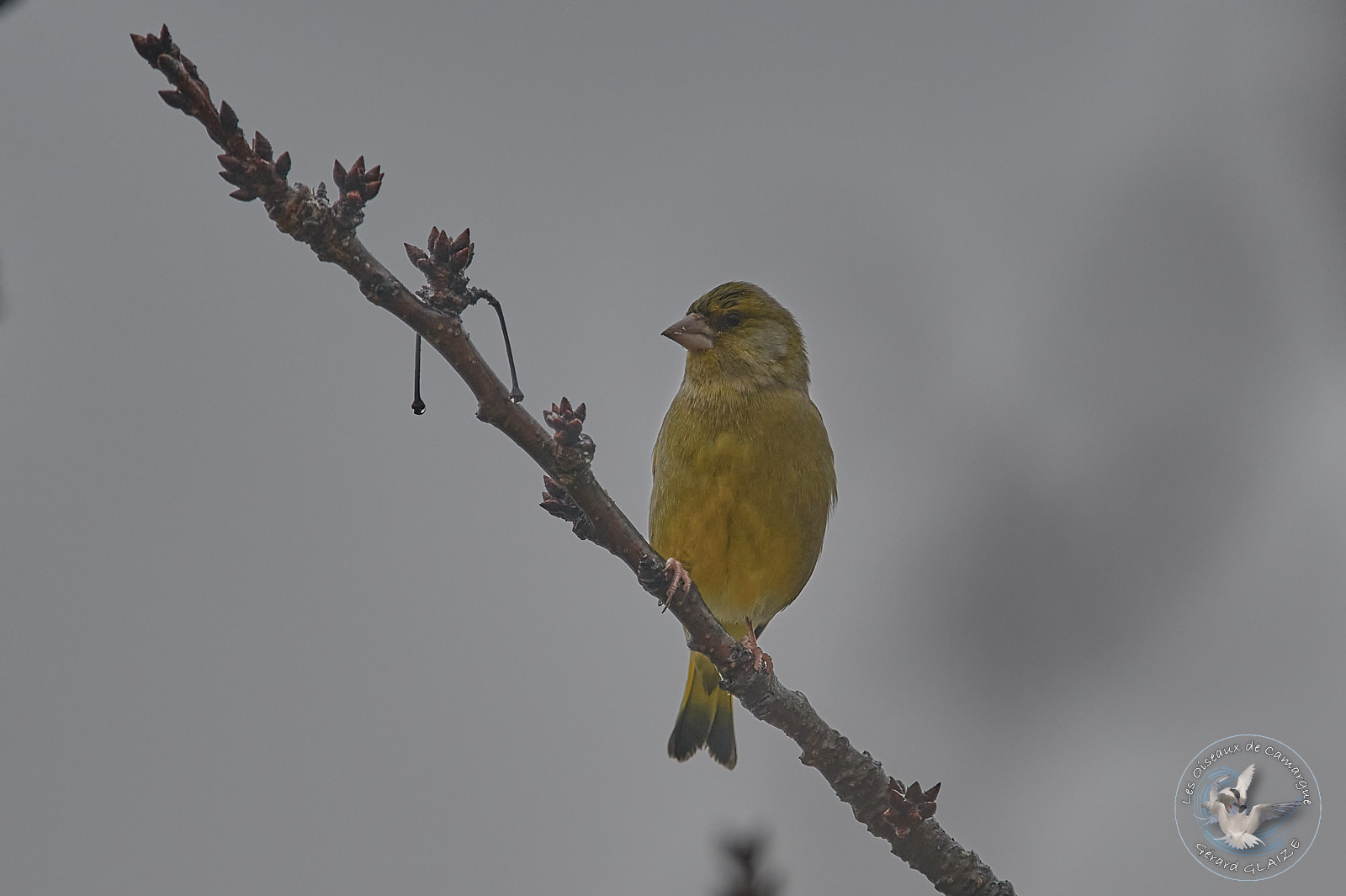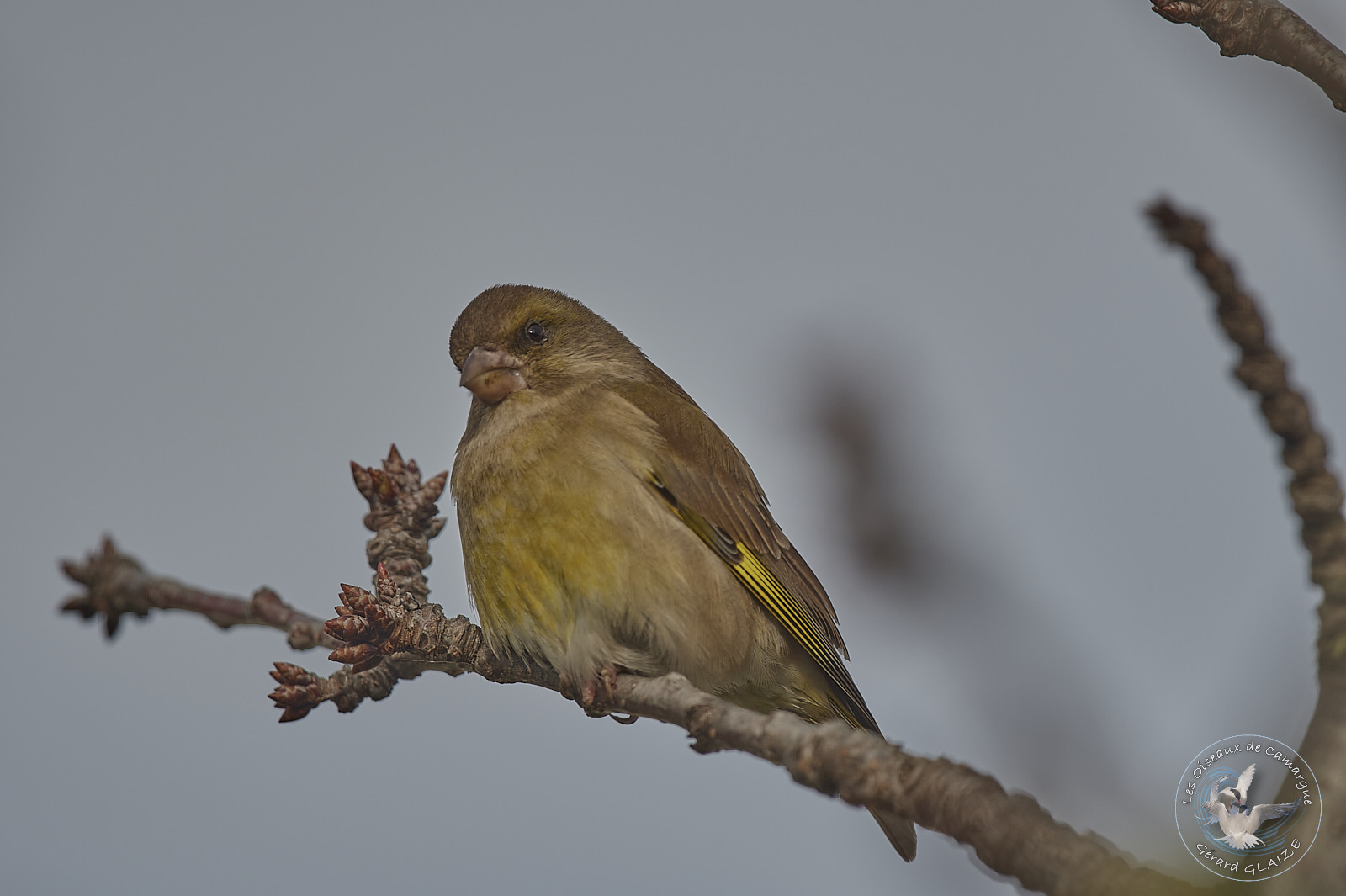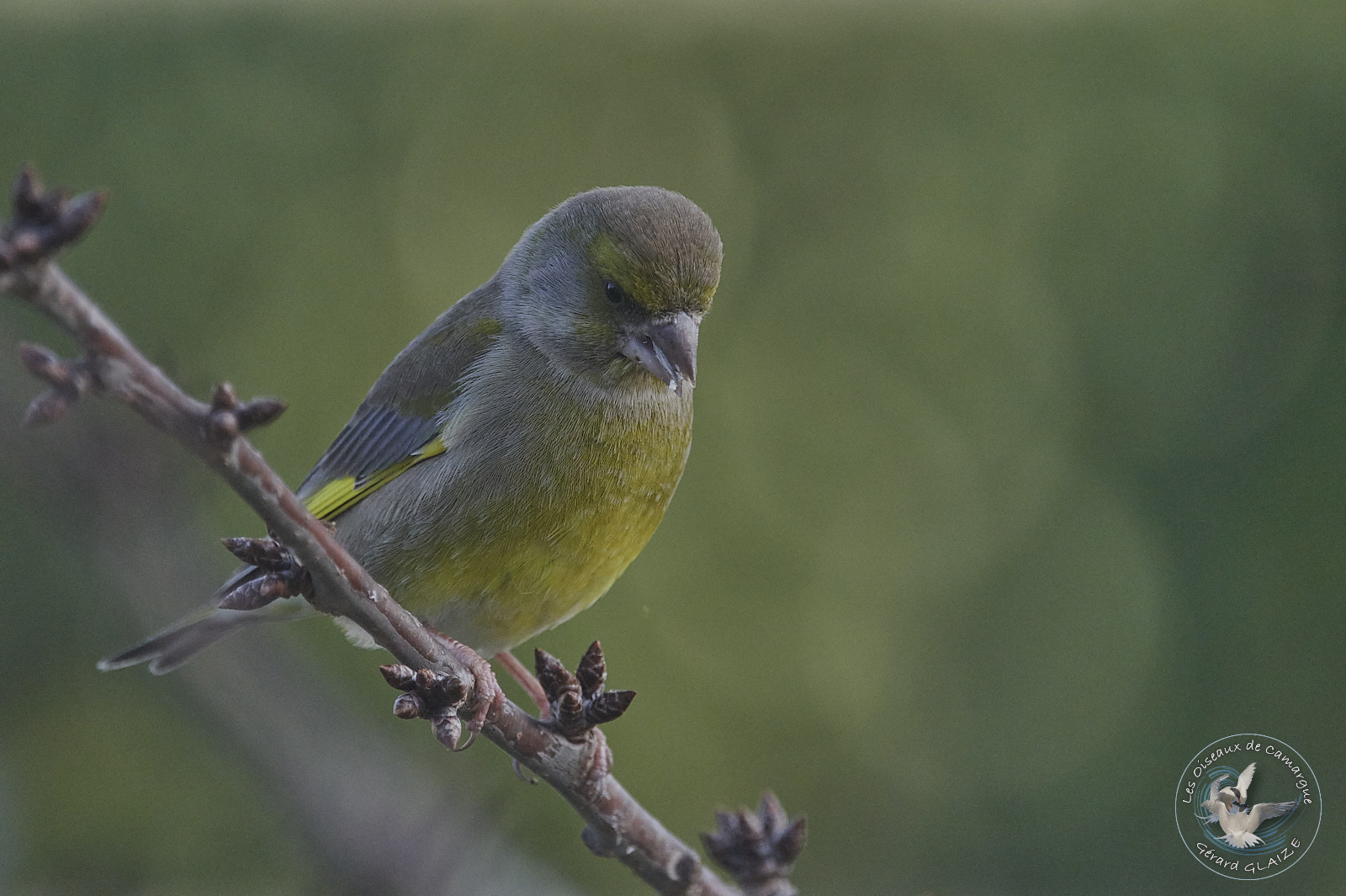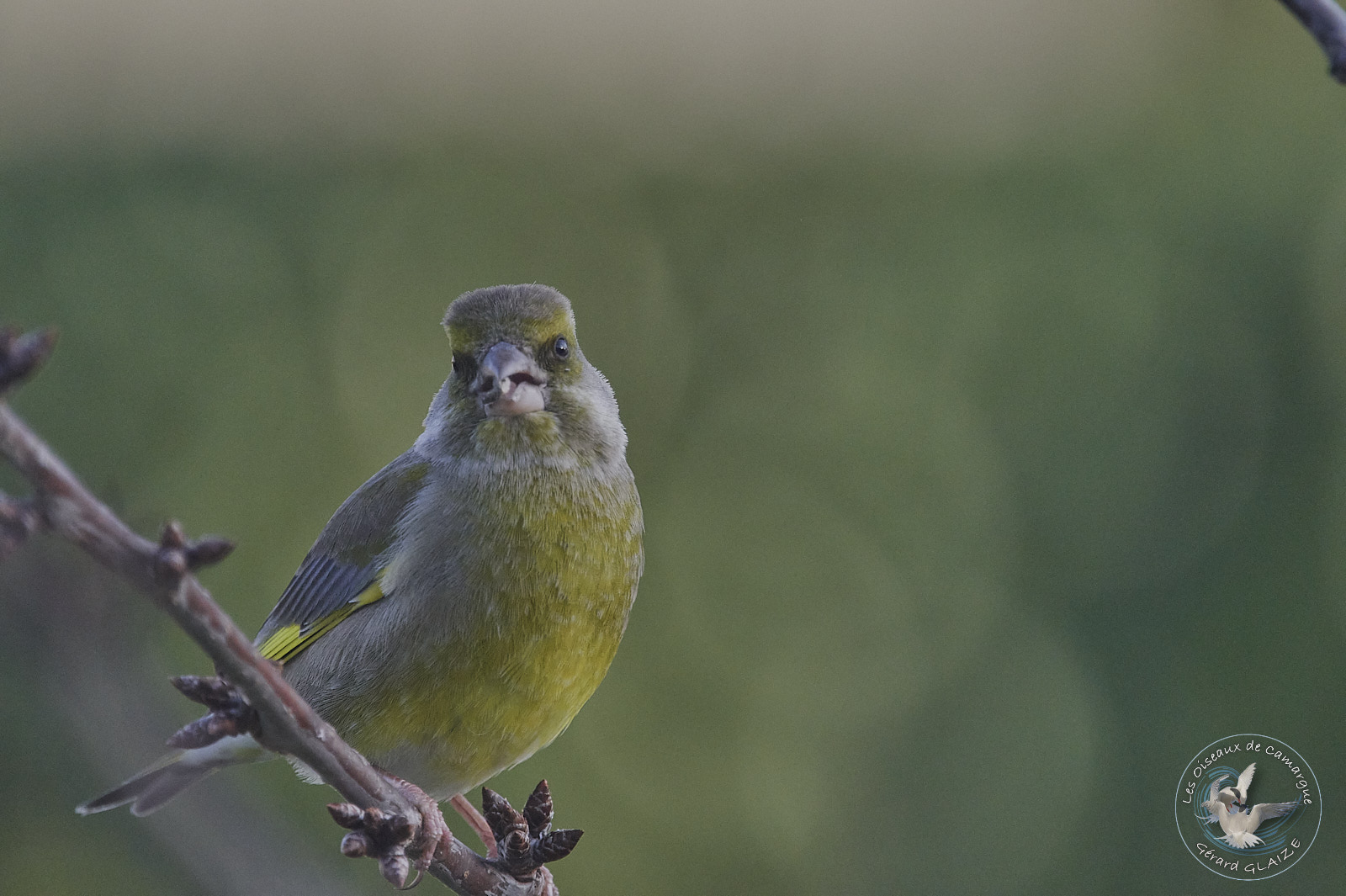European Greenfinch
European Greenfinch is a stocky passerine about the size of the house sparrow. Its body is compact, an effect accentuated by the rather short tail and the large conical beak. The male is olive-yellow green with bright yellow spots on the wings and on its forked tail at the outer rectrices. It also has less bright yellow spots on its head, belly, and flanks. The female is darker and less green than the male, a little more gray and her yellow spots are however less distinct than those of the male. Eyes are dark brown and the legs light gray brown. The juvenile is browner than the adult, it is striped on the belly and on the back and its wings are duller.
European Greenfinch
Scientific name : Chloris chloris
Family : Fringillidae
Length: from 14 cm to 15 cm – Wingspan: from 25 cm to 28 cm
Weight : from 25 gr to 34 gr
IUCN Conservation Status: LC
Flight
The Greenfinch, like all finches, has an undulating, direct and powerful flight, punctuated by cries. During the nuptial flight, the greenfinch flutters around the female describing circles with weak wing beats while singing nonstop.
Habitat
The Greenfinch frequents open wooded areas and their edges, bushy areas, gardens and crops. It is common all over Europe. However, it has adapted well to human presence.
Regime – Diet
The European Greenfinch feeds mainly on the seeds of a large number of woody and herbaceous plant species, of varying size and consistency, but also on buds and small fruits. The young are fed insect larvae during their first days of life, then young seeds.
This species often frequents feeders in winter, and particularly likes sunflower seeds.
Nesting
It often installs its nest in the dense vegetation of a conifer if it is a first brood because these plants provide it with sufficiently dense plant cover at the start of the season. There are two annual clutches, more rarely three. The first takes place at the end of April, the second in June and possibly the third at the beginning of August. The female builds her nest on the branches two or three meters above the ground. It is a fairly massive cup made up of branches and twisting roots on the outside, lined on the inside with very fine grasses, rootlets and plant (egrets of herbaceous plants) and animal (wool, feathers) down.
The clutch consists of four or five eggs. The female will brood on her own for about two weeks. While she is incubating her eggs, the male feeds her at the nest. After hatching, both parents raise the chicks and feed them already shelled seeds and caterpillars or spiders. Two weeks after hatching, the young, still unable to fly, leave the nest but do not go far from it. They remain on nearby branches for a few days where the parents continue to feed them.
Migration
The Greenfinch is sedentary with us. However, individuals from populations in more northern countries, such as Denmark or Sweden, come to increase the numbers of French populations in winter.
Protection
The European Greenfinch is a globally non-threatened species, however the species is in decline in France.
It enjoys total protection on French territory since the ministerial decree of April 17, 1981 relating to protected birds throughout the territory. It is therefore prohibited to destroy, mutilate, capture or remove it, to intentionally disturb or naturalize it, as well as to destroy or remove eggs and nests, and to destroy, alter or degrade its environment.
Song
The male may sing from an exposed singing position, such as the top of a tree, or during the fluttering courtship flight. Its sonorous and rapid voice is a light “gugugu” for adults and a “khip-khip-khip tuî” for juveniles. During the nesting season, the greenfinch launches a long nasal “tsouîî”. During its nuptial flight, its repeated songs are cries combined with very loud “dchièèh”.
Useful Links
Other Links
- You can see the article from my site “Birds of Camargue” for more information on the Camargue and the Birds.


